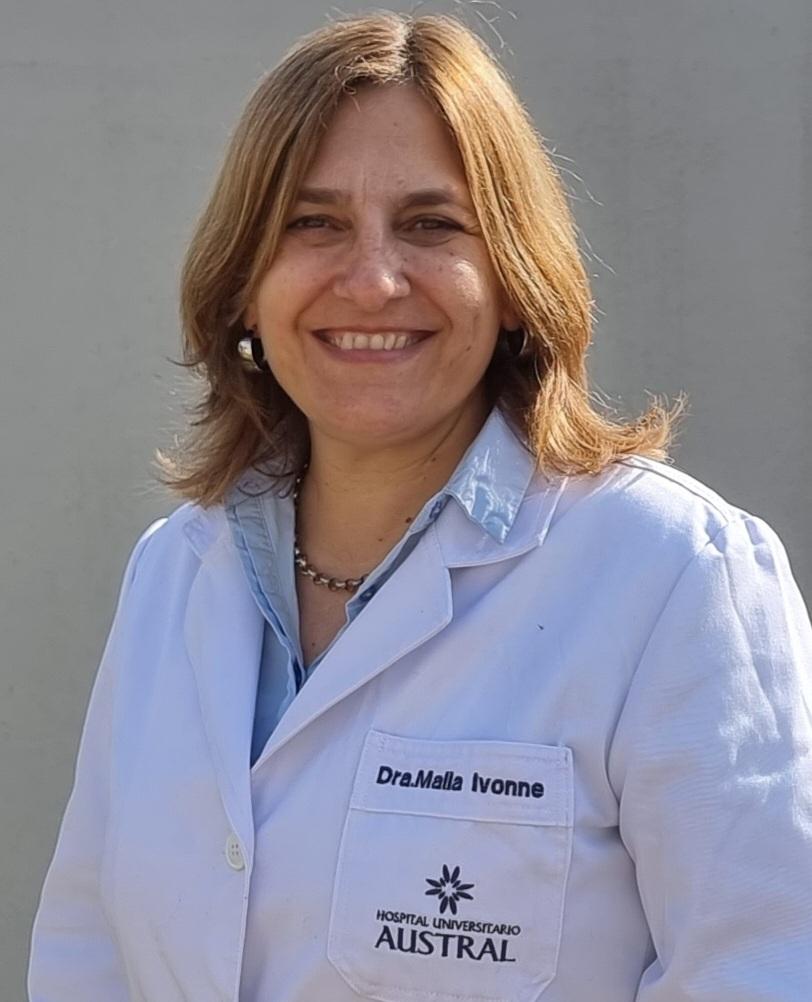
Ivone Malla
Medical Doctor, Pediatric Hepatologist and Transplantologist
Studies:
Medical Doctor School of Medicine Universidad Nacional de La Plata.
Pediatric Residency Hospital Interzonal “Sup. Sor María Ludovica” La Plata.
Fellow Hepatology and Liver Transplant 2005-2007. Hospital Universitario Austral.
Fellow Pediatric Gastroenterology, Hepatology, Liver Transplant and Cellular Therapy 2007-2009. Cliniques Universitaires Saint-Luc. Universidad Católica de Lovaina.
Profesional activities:
Hospital Universitario Austral: Head of Pediatric Hepatology and Pediatric Liver Transplant Section, since 2010.
Hospital de Pediatría J.P. Garrahan: Hepatologist, since 2013.
Outcomes in pediatric recipients of living donor liver transplantation
Ivone Malla1, Érika Selzer Dr1, Ariel González Campaña Dr2, Néstor Panattieri Dr3, Silvio Torres Dr4, Luis Gustavo Podestá Dr2, Martín Fauda Dr2.
1Pediatric Hepatology and Pediatric Liver Transplant Section, Hospital Universitario Austral, Pilar, Argentina; 2Hepatic and Liver Transplant Surgery Unit, Hospital Universitario Austral, Pilar, Argentina; 3Pediatric Inpatient Unit, Hospital Universitario Austral, Pilar, Argentina; 4Pediatric Intensive Care Unit, Hospital Universitario Austral, Pilar, Argentina
Background: Living Donor Liver Transplantation (LDLT) is an option increasingly used to solve deceased organs shortage for pediatric patients with end stage liver disease (ESLD), inborn metabolic diseases or liver tumors.
Aim: To report our results in pediatric patients with LDLT.
Patients and Methods: Digital charts of pediatric recipients of LT between 2001 and 2021 were retrospectively reviewed and outcomes in survival, complications and hospitalization time were analyzed with SPSS program, comparing LD and deceased donor (DD) LT.
Results: 217 pediatric patients received LT between 2001 and 2021 in our center, 37.8% boys and 62.2% girls. Median age at LT was 15mo (range: 28d-17yr). Biliary Atresia was the most frequent indication of LT (56.7%), followed by Acute Liver Failure (18.4%). Median follow-up time was 23mo (range 12mo-18yr). Overall patients and graft survival was 80% and 74%, respectively, improving to 90% and 83%, respectively since 2010, when LDLT increased from 46% to 83% (fig). Overall, 148 patients received LDLT (68.2%) and 69 DDLT. Patients and grafts overall survival was better in LDLT group (84%, 78%, respectively) than in DDLT group (72.5%, 68%, respectively), vascular complications were 18% in LDLT (mostly portal vein stenosis. Hepatic artery thrombosis –HAT: 3%) and 8.7% in DDLT (HAT: 5%), biliary complications were 34% in LDLT and 26% in DDLT, median ICU stay was 6d (range 1-78d) in LDLT and 6d (range 0-117d) in DDLT, median global hospitalization time was 17d in LDLT (range 1-132d) and 16d (range 5-144d) in DDLT, median age at LT was 14mo (range 28d-14yr) in LDLT group and 9yr (range 6mo-17yr) in DDLT group.
Conclusions: In our series, even though LDLT group showed more vascular and biliary complications related to younger and smaller recipients in this group, they had better survival and similar ICU and global hospitalization time. LDLT is an excellent option and provides good outcomes for pediatric patients with ESLD in the scenario of organs scarcity.

right-click to download
